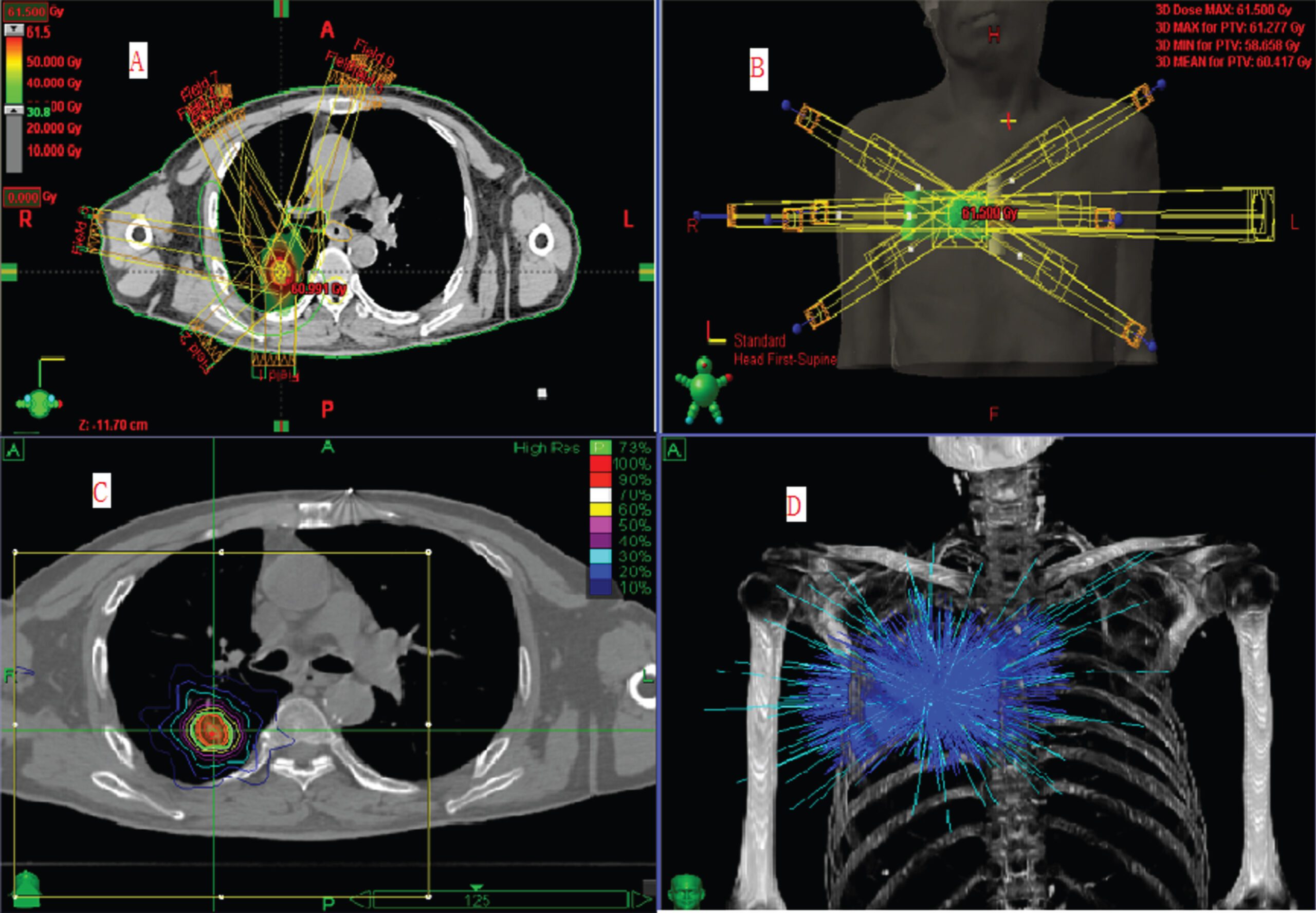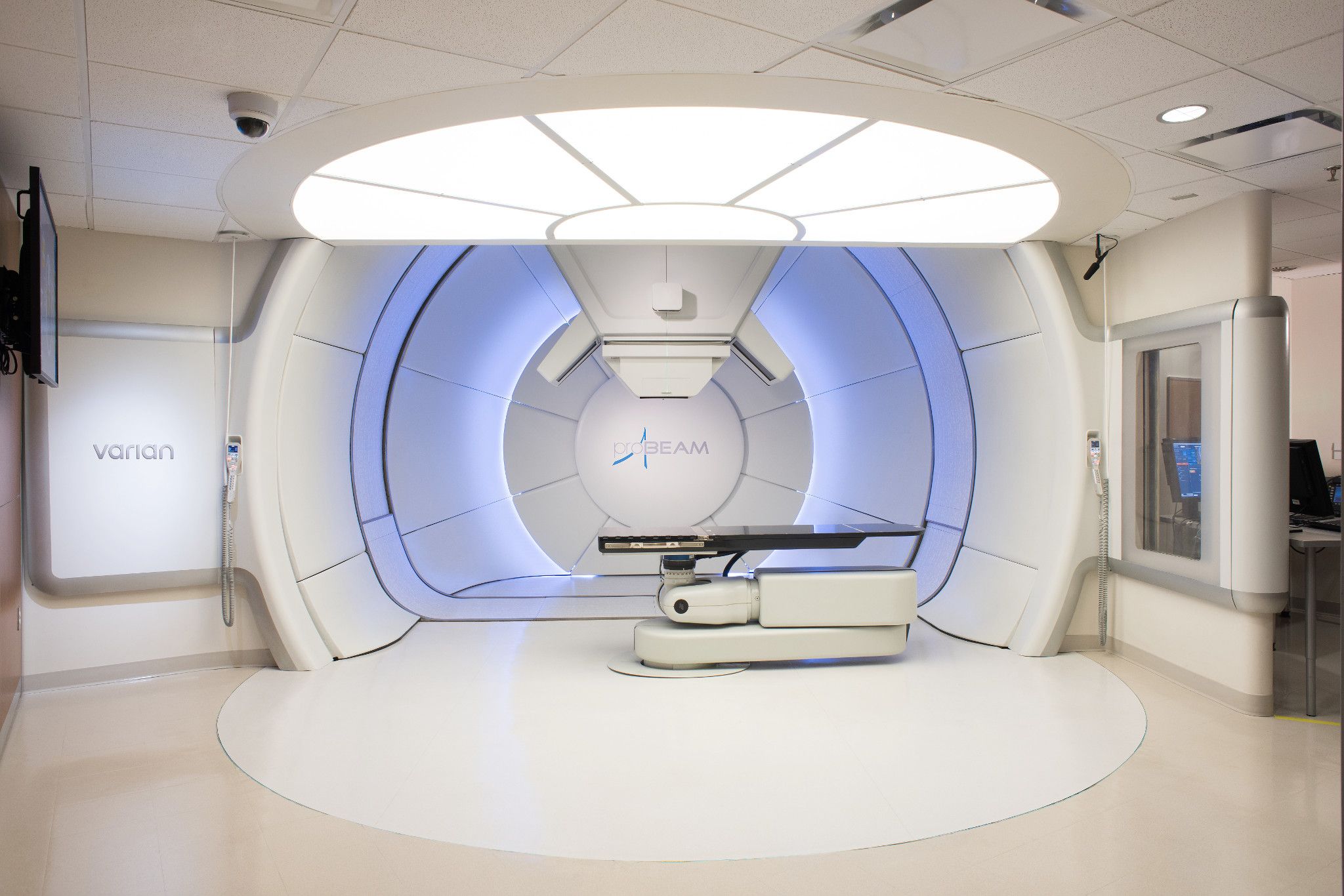Radiotherapy plays a critical role as a primary treatment for small cancers ( stereotactic body radiotherapy in patients who are not suitable for surgery) or in combination with chemotherapy as the main treatment for inoperable (patients with mediastinal nodes) cases. Find out more about concurrent chemotherapy for unresectable lung cancers. Radiotherapy helps improve local control, relieve symptoms, and enhance overall survival rates in patients with lung cancer.
In metastases to the lungs from other primary sites, stereotactic body radiotherapy is highly effective and safe for eradication of these small spreads. Find out more about the addition of immunotherapy with SBRT. In patients who relapse near the surgical bed, SBRT can be used to eradicate the disease too. Increasingly, even metastatic patients on targeted agents or immunotherapy who is demonstrating early progression of a few distant sites should consider SBRT to eradicate the resistant clones. Patients with a limited number of metastatic lesions, good overall health, and controlled primary disease are generally considered suitable candidates.
Radiotherapy can be used as the primary treatment for lung cancer or in combination with other treatments such as surgery or chemotherapy, depending on the type and stage of the cancer.
Here are some key points about radiotherapy for lung cancer:
- Types of Radiotherapy:
- External Beam Radiotherapy (EBRT): This is the most common type of radiotherapy for lung cancer. It involves directing radiation from outside the body toward the cancerous tumor. The patient typically lies on a treatment table, and a machine delivers the radiation precisely to the targeted area.
- Internal Radiotherapy (Brachytherapy): This involves placing a radioactive source directly inside or very close to the tumor. While less common for lung cancer, it may be used in specific cases. This is not common and only given in very dedicated centers.
- EBRT can be given with xray (photons) or proton therapy.
- Treatment Planning:
- Before starting radiotherapy, a detailed treatment plan is developed. This includes imaging studies, such as CT scans, to precisely locate the tumor and determine the optimal angles for radiation delivery.
- During simulation, you may be asked to breathe slowly and regularly ( 4D CT scan) whereby your breathing cycle is imaged so that the tumour movement is tracked and delineated out for target planning.
- During simulation, you may also be asked to hold your breath ( gating) so that the tumour movement is minimized during radiotherapy.
- During simulation, you may also be asked to wear a belt around the abdomen to minimize diaphragm movement.
- Sessions and Duration:
- Radiotherapy is usually administered in multiple sessions, referred to as fractions. The total number of sessions and the overall duration of treatment depend on factors such as the type and stage of lung cancer.
- Treatments are typically given daily over several weeks, allowing healthy cells to recover between sessions.
- For stereotactic body radiotherapy, treatments range from 1 to 5 sessions.
- For conventionally fractionated EBRT ( 3D, IMRT, VMAT or proton beam), treatments range from 20# to 35# ( 4 to 7 weeks).
- Side Effects:
- Radiotherapy may cause side effects, and these can vary from person to person.
- Acute side effects for lung cancer radiotherapy include fatigue, difficulty swallowing, skin changes in the treated area nd nausea.
- Subacute side effects include pneumonitis (inflammation of the lungs) which can be assymptomatic or cause shortness of breath. Usually this is temporary, but sometimes may require oxygen supplementation or steroids.
- Long term side effects include lung scarring, cardiac issues such as heart failure or ischemic heart disease.
- Most acute side effects are temporary and can be managed with supportive care.
- Combination with Other Treatments:
- Radiotherapy is often used in combination with surgery, chemotherapy, or both. The choice of treatment depends on factors such as the stage and type of lung cancer, as well as the overall health of the patient.
- Palliative Radiotherapy:
- In cases where the cancer is advanced and cannot be cured, radiotherapy may be used to relieve symptoms and improve the quality of life. This is known as palliative radiotherapy.
It’s important for individuals considering or undergoing radiotherapy for lung cancer to discuss the potential benefits and risks with their healthcare team, as well as to address any concerns or questions they may have about the treatment process




